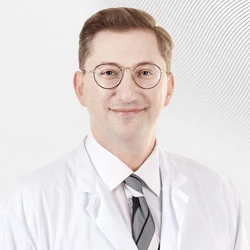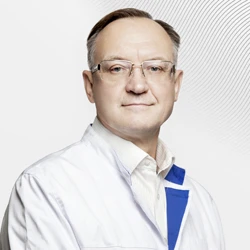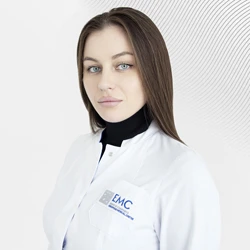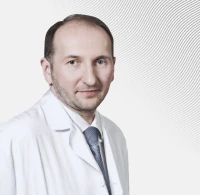What is a migraine?
It is a benign neurological disease that affects 15% of people worldwide.
In women, the disease manifests itself 3 times more often than in men. And if one of the relatives has migraines, there is a risk of getting attacks inherited and passing them on to their children.
Migraine symptoms
1. Severe throbbing or bursting headache. It can be either one-sided or two-sided. The typical localization is the frontal, temporal, and ocular areas, but other parts of the head may also be affected.; 2. Pain increases with movement and physical exertion; 3. Sometimes there is nausea and vomiting, sensitivity to smells, sounds and light.Migraine attacks recur from once a year to several times a week. With chronic migraine, the headache haunts the patient for more than 15 days a month.
What are the forms of migraines and how do they differ?
Migraines can occur with or without aura. Aura is a harmless process that occurs in the brain before the onset of a headache. It is more often manifested by visual disturbances (flashes, flickering, glare, blurred vision). Less often — numbness in the arm, face, and speech difficulties. The aura lasts no more than an hour.Where does migraine come from?
During a migraine attack, the trigeminal nerve system is activated. At the same time, a large number of substances are released that change the tone of blood vessels, provoke and increase pain.
The first signs of migraines often appear in childhood. And by the age of 50, seizures stop, although there are exceptions. Some patients continue to experience migraines in their 60s and even into their 70s.The disease is often inherited. But the intensity and frequency of headaches can vary even among the closest relatives.
Migraine attacks occur less frequently if their trigger provocateurs are avoided.
What triggers can trigger a migraine attack?
1. Physiological causes: fatigue, lack or excess of sleep, physical activity ; 2. Hormonal causes: hormone replacement therapy, menstruation, ovulation, pregnancy, taking oral contraceptives; 3. Psychological causes: anxiety, stress, depression, increased mental and emotional stress ;4. Dietary reasons: irregular meals, hunger, alcohol, certain foods (cheese, chocolate, coffee, cocoa, smoked meats, citrus fruits, avocados, nuts, chicken liver);
5. External causes: noise, bright light, pungent odors, stuffiness, visual stimuli, atmospheric pressure.How is migraine diagnosed?
Most often, a doctor diagnoses a migraine after talking to a patient. It is enough to describe the symptoms and triggers of seizures. There are no special examinations to confirm this diagnosis. Why? The fact is that the changes that can be detected are also found in people without headache complaints.But sometimes the doctor still prescribes an additional examination for the patient. It is necessary to exclude other, more dangerous diagnoses.
How to treat migraines?
Over-the-counter analgesics based on ibuprofen, paracetamol or aspirin are usually used to relieve seizures. But sometimes their actions are not enough.
In such cases, the doctor may prescribe specific anti—migraine drugs, triptans, to the patient. They do not affect pain, but rather the pathological processes in the brain during an attack.Important: painkillers should not be taken too often (15 or more days per month). Otherwise, the patient risks acquiring a drug-induced headache.
Other manifestations of migraine are treated symptomatically. For example, antiemetic drugs.
Is it possible to reduce the frequency and intensity of migraine attacks?
Yes, if you adjust your lifestyle, stop seizures correctly and take medications to prevent migraines.
There are several types of medicines in the doctor's arsenal. The patient may be prescribed some of the antidepressants, medications designed to lower blood pressure, antiepileptic drugs, injections of botulinum toxin and other medications, percutaneous and minimally invasive electrical stimulation.
In recent years, doctors and patients have increasingly chosen monoclonal antibodies. These are safe and extremely effective drugs that have been synthesized specifically for the treatment of migraines.Preventive therapy is always selected individually. It is necessary to take into account the peculiarities, concomitant conditions and diseases of the patient.
How can I help myself additionally?
1. Monitor the intake of painkillers and other medications;
2. Practice fitness;
3. Do not allow physical and emotional overexertion, stress; 4. Observe the sleep and rest regime.Migraine treatment is a painstaking process. To get seizures under control, it is important for the patient to cooperate with the doctor, keep a headache diary, take prescribed medications regularly and eliminate triggers as much as possible.
But life without a headache is worth all these actions!
.webp)







.webp)









